 Last additions Last additions |
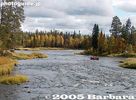
Almost autumn colorsOct 05, 2005
|
|

A piece of cakeOur guide instructed us as to when to start paddling forward or backward.Oct 05, 2005
|
|

Easy rapidsOur guide instructed us as to when to start paddling forward or backward.Oct 05, 2005
|
|

Shooting the rapidsOct 05, 2005
|
|
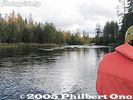
Cruising with outboard motorWe had oars, but an outboard motor also propelled us on the water.Oct 05, 2005
|
|
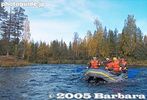
One paddle, two paddleThat's me wearing the red helmet.Oct 05, 2005
|
|
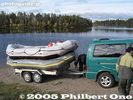
Great day for raftingBut later we had hail.Oct 05, 2005
|
|

Life jackets, helmets, waterproof jacket/pants, boots, and glovesFirst we had to suit up. It was like we were ready for combat. But it wasn't that dangerous.Oct 05, 2005
|
|
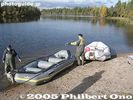
"If you fall out, just float and do nothing. We'll grab you back in."Before we started off from Käylä, our guides gave us basic instructions such as what to do if we fell out of the raft. (Don't do anything and just float until someone grabs you and pull you back into the raft.)Oct 05, 2005
|
|
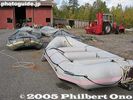
Rafts ready to roll from KäyläOct 05, 2005
|
|
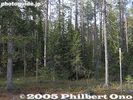
Frontier Zone forest borderThe border is marked by sticks in the ground having yellow rings.
森林の中にも国境をちゃんと表示している。Oct 05, 2005
|
|
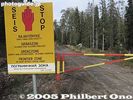
Border caution signOct 05, 2005
|
|
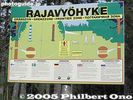
Frontier Zone noticeOct 05, 2005
|
|
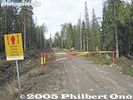
Russian border: Frontier Zone ロシアとの国境There were no border guards, but it is definitely not a good idea to cross into the Frontier Zone.Oct 05, 2005
|
|
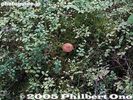
MushroomProbably not edible.Oct 05, 2005
|
|

Oct 05, 2005
|
|
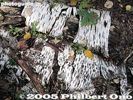
Old tree barkOct 05, 2005
|
|
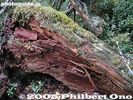
Growth on fallen treeOct 05, 2005
|
|

Fallen treeYou see fallen trees everywhere in the forest. Instead of being cleared away, they are left on the ground where they rot and host new life such as moss and lichens.
Finland has a lot of dead or half-dead trees too with wilted branches and no leaves. This is something we don't see so much in Japan. Most trees are cut down and hauled away for lumber before they die.
倒れた木が多い。そのまま放置されて後ほど新しい生き物が。Oct 05, 2005
|
|

Twisted tree ねじった木No one knows for sure how the tree trunk gets twisted like this. Maybe the snow twists it while melting around the tree.Oct 05, 2005
|
|
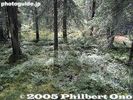
Forest floorOct 05, 2005
|
|

TreeOct 05, 2005
|
|
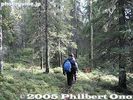
More forestOct 05, 2005
|
|
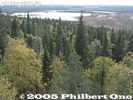
Yheksänsylenkallio scenic lookoutIt is above a tall cliff.Oct 05, 2005
|
|

Yheksänsylenkallio scenic lookoutAnother scenic lookout point on Näränkävaara Hill called Yheksänsylenkallio. Don't ask me how to pronounce it.Oct 05, 2005
|
|
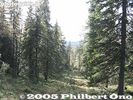
Forest boundary 古いと新しい森林の境Boundary between the old and new forest. Bird-watchers would love this area since there are many birds around.
Read more: http://www.kuusamobirds.net/en/tourism44.phpOct 05, 2005
|
|
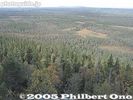
Kirkkokallio: Scenic lookout toward Russia ロシアA vast forest panorama unfolds from this lookout spot.
ロシアに向かっている素晴らしい景色。Oct 05, 2005
|
|
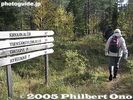
Trail to scenic spotsFrom the farm house, we hiked further up Näränkävaara Hill to the scenic lookout spots.
牧場からさらに歩くと景色のいいところがある。Oct 05, 2005
|
|
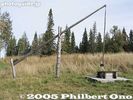
Not a wellOct 05, 2005
|
|

Bird houseAttached to the sauna building.Oct 05, 2005
|
|

Description of farm lifeIn Finnish, this describes the month-to-month, self-sufficient farm life here. Too bad there's no English translation.
毎月の牧場の生活を説明している(フィンランド語)。Oct 05, 2005
|
|
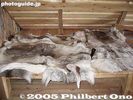
Mattress made of reindeer fur 敷き布団Looks soft and warm. How do they wash it?
敷き布団はトナカイの毛皮。Oct 05, 2005
|
|
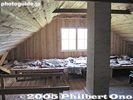
Farmhouse bedroom on 2nd floor 2階の寝室Bed for several people.Oct 05, 2005
|
|
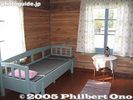
Farmhouse bedroomOct 05, 2005
|
|
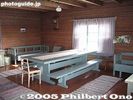
Farmhouse dining room ダイニングルームThe dining room is nice and spacious.Oct 05, 2005
|
|
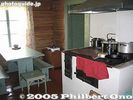
Farmhouse kitchen 台所Nice clean kitchen with wood-burning stove, and all the pots, pans, and utensils are provided.Oct 05, 2005
|
|
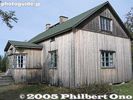
Farmhouse for rentSee the next image to see the inside.Oct 05, 2005
|
|
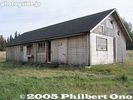
Old barn, now renovated 元牧場Näränkä farm's former barn has been renovated as an exhibition room. It had an old sled (pulled by horses) and farming tools on display.Oct 05, 2005
|
|
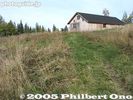
Näränkä farm 元牧場At the end of the trail, there was a small clearing on a small hill called Näränkävaara where there was a farmhouse and barn. It was the old Näränkä farm.Oct 05, 2005
|
|
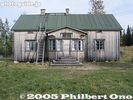
Näränkä farmhouse for rent 元牧場の家A farming family used to live here from 1841 to 1970. This was their house. The living conditions were quite severe during winter, but they were self-sufficient. The children had to walk for hours to attend school.
This house has been renovated and it is available for short-term rental. It can accommodate maybe 10-15 people. A sauna is also within the property. It's quite isolated so you have a lot of privacy.
For reservations and more info: http://www.kuusamobirds.net/en/tourism44.php
1841~1970年に農業の家族が住んでいた民家。この家は、リフォームされて短期間に貸し出し用。かなり大きいで10人以上が泊まれる。勿論、新婚さんも使用できる。サウナも別の建物にある。Oct 05, 2005
|
|

Näränkä TrailRubber boots were required for this easy hike first on these duckboards over the bog. After going to Finland, I found it difficult to understand the difference between marsh, swamp, wetland, and bog which I heard the most often in Finland. I usually call it marsh. Never used the word "bog" until I visited Finland.Oct 05, 2005
|
|

Reindeer rearNotice the owner's collar around its neck.
首輪に所有者の連絡先がある。Oct 05, 2005
|
|
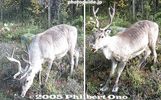
Boo! びっくりしたトナカイOn the way to Näränkä, we saw this reindeer feeding right along the roadside. It didn't notice us until some seconds later. That was enough to take out my camera and take photos. Finally, it saw us and got startled. The right photo shows the reindeer's surprised look on his face. This was the closest I ever came to a reindeer.
道端にいたトナカイがびっくりした。Oct 05, 2005
|
|

Näränkä map ナェラェンカェの地図Näränkä is southeast of Kuusamo near the Russian border (purple line on map). There's a hill called Närängänvaara from which there are scenic lookouts. It's an easy drive from Kuusamo if you know which way to go. The roads are unpaved.
Once Russia allows tourists in Finland to cross over to Russia, this area will probably become quite popular.
More info: http://www.luontoon.fi/Oct 05, 2005
|
|
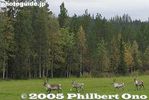
ReindeerOn the way to Julma Ölkky, we saw reindeer. They started running as soon as they saw us.
この地域では、トナカイとよく出会う。野生と見えるが、所有者がいる。首輪もあって所有者の連絡先が載っている。事故(例えば車と)があった場合に所有者に連絡できるようになっている。Oct 05, 2005
|
|
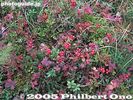
Edible berriesBut pretty sour.Oct 05, 2005
|
|
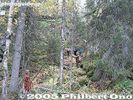
Hiking trailIt was very lush with forest, berries, mushrooms, and lichen.Oct 05, 2005
|
|
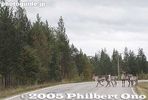
Reindeer crossingFor some reason, reindeer like to cross the road. Our guide gave out a reindeer call and they stopped for a moment to listen. We took their pictures and they ran off.Oct 05, 2005
|
|
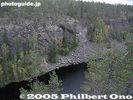
Top of canyonNice view from the ridge. Wish I had a wide-angle lens.Oct 05, 2005
|
|

Ahoy there!Our boat cruised around a bit while we went hiking. The rock walls rise as high as 50 meters from the lake's surface. This photo has been digitally composited.Oct 05, 2005
|
|
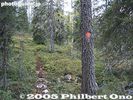
Orange spot marks the pathThese orange spots must really help when the ground is covered with snow.
木のオレンジのマークがハイキングコースの案内印。Oct 05, 2005
|
|
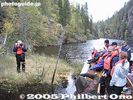
Lassi aloneHe tied a rope to the log and the boat dragged it away. Fortunately, he had a change of clothing. Amazingly, he never shivered and never complained. Such a great sport.Oct 05, 2005
|
|
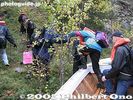
LandingWe got off the boat in the middle of the canyon and some of us went for a short hike to the top of the canyon.Oct 05, 2005
|
|

Our guide in the waterLassi, our fearless and dedicated nature guide, entered the frigid water to remove a log that was obstructing the boat landing where we were going to disembark for a short hike.Oct 05, 2005
|
|
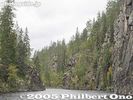
Canyon viewOct 05, 2005
|
|

Tree growing on solid rockOct 05, 2005
|
|
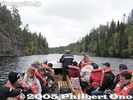
Scenic cruiseIt's not a very long cruise, but it was pleasant. Taking lunch and hot drinks was a good idea.Oct 05, 2005
|
|
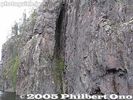
Devil's ChurchThis arch-shaped rock formation was called the Devil's Church by local inhabitants long ago.Oct 05, 2005
|
|
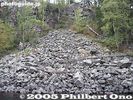
Oct 05, 2005
|
|
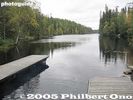
View from boat dockOct 05, 2005
|
|
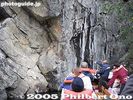
Ancient painting on stone wallOct 05, 2005
|
|
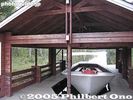
Boat dockFirst we all donned orange life jackets.Oct 05, 2005
|
|
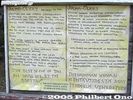
About Julma Ölkky ユルマ・オェルッキュについてGood introduction to the canyon lake.
石壁は最高50mの高さがある。湖の深さも50m位。一つの目玉は、石壁に書いている絵(4000年前)。Oct 05, 2005
|
|
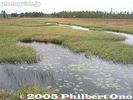
MarshWe saw a moose here, but it ran away. Like this place, Finland has a lot of wetlands. Rubber boot makers must do good business in this country.Oct 05, 2005
|
|
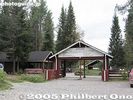
Julma Ölkky boat dockIt seems that only one operator offers boat trips in the canyon lake during summer.
Web site: http://www.julmaolkky.fi/Oct 05, 2005
|
|
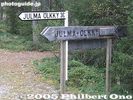
To Julma ÖlkkyAn easy day trip from Kuusamo, if you know how to get there. The road is unpaved.Oct 05, 2005
|
|
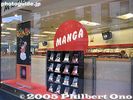
Manga display in bookstoreManga and anime have taken Europe by storm. It was surprising to see bookstores even in Finland having prominent displays of manga and anime books and magazines.
マンガとアニメがヨロッパにも大人気。まさか人口5百万人のフィンランドにも人気で本屋に行くと必ずこのようなマンガ/アニメのディスプレイが設置してある。Oct 05, 2005
|
|

Bus in front of Railway Station 駅前のバスFinnish design perhaps. Definitely better looking than buses in Japan.Oct 05, 2005
|
|

Railway Station platforms 駅のホームNever rode a train in Finland. Can't see it in this picture, but there was a fruit stand on the right.Oct 05, 2005
|
|

Inside a fortress building 中の石垣The fortress has a lot of nice stonework still intact.
スオメンリンナは、まだ石垣がたくさん残っている。Oct 05, 2005
|
|

Bicycles next to Railway Station 駅前の自転車You see this only during the warmer months.
放置自転車は見かけなかった。ママチャリも全然ない。Oct 05, 2005
|
|
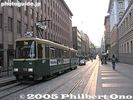
Tram in downtown HelsinkiTrams and buses are the city's main means of public transportation.
日本では市電が少なくなっていますが、ヨロッパではまだ健在。Oct 05, 2005
|
|
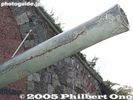
Closeup of cracked barrel 割れた砲Oct 05, 2005
|
|
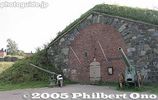
Japanese gun on left 沿岸砲兵博物館にてThe gun is in front of the Coastal Artillery Museum at Suomenlinna. You can find it on the "Guns of Suomenlinna" map available free at the Visitor Center.
左が元日本海軍の大砲。沿岸砲兵博物館の前にある。スオメンリンナの観光案内所で大砲の地図がある。それを見ればこの日本の砲も見つけられる。Oct 05, 2005
|
|
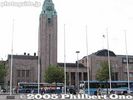
Helsinki Railway Station ヘリシンキ中央駅In Finnish, "Rautatieasema" (or "Rautatientori" for the railway square where the bus stops in front of the rail station). A good word to know when you want to catch a bus to the railway station. Compared to English (and Japanese), the Finnish language has many long words with so many syllables. I had much difficulty trying to pronounce and spell words in Finnish.
The terminal building was designed by Finnish architect Eliel Saarinen (1873-1950). Not to be confused with his famous son Eero Saarinen (1910-1961) also an architect who designed Dulles Airport near Washington, DC and the Gateway Arch in St. Louis, Missouri. (I didn't know he was Finnish.)
Even this side entrance of the train station looked so impressive that I thought it was the front side of the station. The front side is much wider and grander.
フィンランド出身の有名建築家エーロ・サーリネン(1910-1961)の父親、エリエル・サーリネン(1873-1950)が設計した中央駅。写っているのは、一つの横の入口で、正面側はもっと大きい。この横の入口でもりっぱなもの。Oct 05, 2005
|
|
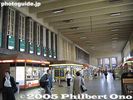
Railway Station terminal buildingThere are people, but it is never as crowded as a central train station in Japan.Oct 05, 2005
|
|
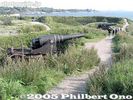
Suomenlinna fortress スオメンリンナComprising several small islands, Suomenlinna was a sea fortress originally built in 1748 by the Swedish empire (when Finland was part of Sweden) to fend off attack by Russia in the east.
Today, it is Helsinki's biggest tourist attraction. Besides being a World Heritage Site, it is a pleasant island for picnics (in warmer months) and picture-taking. It's quite big, so you cannot see everything on a day trip.
The fortress has museums, restaurants, and over 100 old cannons and guns still remaining.
Web site: suomenlinna.fi
Another: Virtual Finland
世界遺産でもあるスオメンリンナは、ヘルシンキ沖にある島で中世の城塞。ヘルシンキの最大の観光目玉。スオメンリンナはまだ100本以上の大砲が残っている。
HP: スオメンリンナ要塞(日本語)Oct 05, 2005
|
|

Maker's inscription on Japanese gun 大砲の日本語表示It says the gun was made by Kure Naval Arsenal in the 31st year of the Meiji Period (1898). Kure was a large naval base in Hiroshima Prefecture.
砲尾の上に「呉海軍造兵廠、明治参拾壱年」 が刻まれていた。Oct 05, 2005
|
|

Valiant service of Japanese gunThis plaque next to the gun describes how it fired its last shot during the Winter War on Feb. 19, 1940 despite being badly damaged. It destroyed a Russian tank and thus repelled a Russian battalion.
Taipale was a small Finnish town on the northwestern shore of Lake Ladoga which is now part of Russia. It was one of Finland's front-line defenses against the advancing Soviet army. Although Taipale never fell to the Russians, it was later ceded to Russia along with the entire surrounding area in accordance with a peace treaty.Oct 05, 2005
|
|

Serial No. on Japanese gunThis looks like a serial No. for this gun. It reads 2143.
砲の製造番号と思われる「弐千百四拾参基」と刻んでいる。Oct 05, 2005
|
|
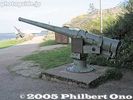
Japanese gun at Suomenlinna 明治時代の日本海軍の大砲We were surprised to hear that Suomenlinna had a cannon from Japan. The Suomenlinna Visitor Center had a map in English called "The Guns of Suomenlinna" with all the cannons and guns listed (over 100), including the Japanese gun.
However, there was no explanation of the Japanese gun, and no one at the Visitor Center knew the history behind the Japanese gun. And I could not find any books in the Visitor Center gift shop that explained about the gun, like how in the world it got to Finland and Suomenlinna from faraway Japan.
But after returning to Japan, I did some reading and found out interesting things about it. On the Web, I found a few Japanese sites (but none in English) that mention this gun, and I found only one Web site with a picture of the gun. So I'm happy to show better pictures of the gun as well as an explanation in English.
This is what I found out so far:
The gun was made at Kure Naval Arsenal in Hiroshima Prefecture in 1898. (This can be confirmed by the inscription on the gun.) Kure was a major navy base.
After the Russo-Japanese War in 1904-05, Japan exported this gun to Russia. Before World War I broke out in 1914, Russia placed this 120mm-caliber gun on the coast to help defend the Gulf of Finland and St. Petersburg (or Petrograd as it was known during WWI) from possible attack by Germany. (Finland during this time was part of the Russian empire.)
After the Russian Bolshevik Revolution of 1917, Finland seized the opportunity and declared itself as an independent country which was approved by Russia. It thereby inherited this Japanese gun positioned in the former Russian territory now under Finnish control. For coastal defense, Finland used this gun as left by the Russians.
On Nov. 30, 1939, the Soviet Union attacked Finland with the intent to conquer it by the end of the year and make it a buffer state against hostile Nazi Germany. This started the Winter War with Finland which lasted until March 1940.
Although Finland's forces were greatly outnumbered by the Soviets, their guerrilla tactics and the severe winter inflicted heavy Soviet casualties. One major battlefront was near a small Finnish town called Taipale on the northwestern shore of Lake Ladoga near St. Petersburg. Taipale had two Finnish batteries, one of which was at Järisevä on the lakeshore, where the Japanese gun was stationed. (I'm not sure how the gun got to Taipale, whether the Russians had put it there from the beginning or whether the Finns moved it there from Finland's coast.)
Taipale was not too far from the border with the Soviet Union and was at the mouth of a small river called Taipaleenjoki. By Dec. 6, the Soviets from the southwest advanced far enough to reach the river on the side opposite of Taipale. What looked to be a piece of cake for the Soviets turned out to be a bloody battle lasting 3 months. The Finns proved to be ferocious fighters.
By Feb. 19, 1940, the Soviets finally started to make headway into the Finnish line of defense, called the Mannerheim Line that partially straddled along the Taipaleenjoki River, with heavy air and ground attacks. It was also the day when they attacked Taipale from both the east and west.
The west flank faced the ice on Lake Lagoda over which the Soviets marched, only to meet with artillery fire from the Järisevä battery on the lake shore. With the help of the damaged Japanese gun, the Finns destroyed two Soviet tanks and kept firing until they ran out of ammunition. The Soviet attack on Taipale from the west thus ended in failure, and the attack from the eastern flank was also futile. The lake ice was littered with dead Soviet soldiers. At the end of the war, the Finns carried their beloved Japanese gun back to Finnish territory even though it was damaged beyond repair.
Although Taipale never fell to the Soviets during battle, Finland was forced to cede the town and the entire region around northern Lake Ladoga (plus some territory in northeast Finland) to the Soviets in accordance with the Moscow Peace Treaty that ended the Winter War on March 12, 1940. These concessions understandably upset many Finns. Thousands of Finnish lives had been lost fighting for territory that was later handed over to the Soviets in peace. The ceded area was also Finland's industrial center and cradle of Finnish (Karelian) culture. The peace lasted only for about a year until both countries again fought each other during the Continuation War during June 1941 to September 1944.
Here's a little more background info about the gun researched by my friend Ronny Rönnqvist and edited by me:
Specifications
The gun is a derivative of the British 4.7 inch/40 (120mm/12cm) Amstrong-Elswick Naval/Coastal Gun, developed in the 1880s. The gun was manufactured under license in Japan by the Kure Naval Arsenal and used on Japanese cruisers of the late 1800s / early 1900s and later as a coastal defence gun.
In Japan the gun is known as Meiji 31st Year Type (120/41A) Kaigun Ho. (As inscribed on the gun in Japanese.) Some guns might have been taken by the Russians already during the Russo-Japanese war, but Japan also later on sold a quantity of these guns to Russia.
History
This particular gun in Suomenlinna is very famous in Finland. It belonged to 8 guns of this type left by the Russian Army in Finland after the War of liberation in 1917-18 when Finland won its independence. These guns were then used as coastal defence guns in various locations.
During the final days of the Winter War in 1940, the Fort of Järisevä in the Finnish town of Taipale on the western shore of Lake Ladoga (now in Russian territory near St. Petersburg) was defended by two such guns. In February only this gun was working when a Russian batallion approached over the lake ice on Feb. 19, 1940.
The gun had been hit and damaged (see the crack on the side of the barrel), but could be barely repaired in time in order to fire at the approaching enemy. By direct aiming and firing the gun with a hammer and although the barrel was badly damaged, the crew succeeded in hitting the tank leading the attack by the 6th shot. Thereby the Russian battalion withdrew and Taipale was saved.
The gun therefore became very famous and was taken to Finland and eventually moved to Suomenlinna to have a place of honour in front of the Coastal Artillery Museum where it is located today.
There were many more Japanese guns used by Finland, all left by the Russian Army in 1918:
- 75 mm mountain gun type 75 VK 98
- light 47mm coastal gun type 47/30
- heavy 150 mm hoowitzer type 150H 14 J ( J for Japan ! )
- a large quantity of Arisaka rifles
But none got as famous as this gun at Suomenlinna!
スオメンリンナには、なんと明治時代の日本海軍の大砲も設置してありました。日本からロシアへ輸出されたそうです。そしてロシアから独立国になって大砲がそのままフィンランドのものになった。
1939-40年のソ連との冬戦争中にラゴダ湖岸にあるタイパレ村にフィンランド軍がこの痛んだ大砲でソ連の部隊に発砲して一台の戦車を大破してソ連の攻撃が失敗に終わった。これで一躍有名になった大砲がスオメンリンナの栄誉な場所に移動された。ロシアから譲った他の日本製の砲もあったそうですが、この砲が一番歴史的で有名。Oct 05, 2005
|
|

Helsinki waterfront market place and seagull マーケット広場The waterfront and market square is one of the city's most picturesque areas.
ヘルシンキ市内の一番美しいところ。Oct 05, 2005
|
|
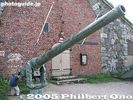
Japanese gun at Suomenlinna 日本海軍製の大砲Right view of gun where you can see the cracked barrel.Oct 05, 2005
|
|
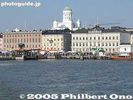
Helsinki waterfront from ferryThe Cathedral floats nicely above the waterfront buildings. Now I understand why it was built on a hill and painted white.
白い大聖堂も浮かぶように見える。Oct 05, 2005
|
|
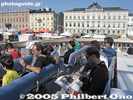
Ferry to Suomenlinna Sea Fortress スオメンリンナへのフェリーA boat for Suomenlinna departs often from the market place at the waterfront. Only 15-min. ride. Suomenlinna is a sea fortress designated as a World Heritage Site and Helsinki's biggest tourist attraction.
スオメンリンナは、ヘルシンキ沖にある島で中世の城塞。このフェリーで15分。
HP: スオメンリンナ要塞(日本語)Oct 05, 2005
|
|
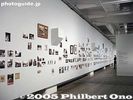
Finnish Museum of Photography フィンランド写真美術館の展示室Large, impressive space. The bookshop also had a good collection of photo books.
相当広いスペースです。一階だけですが、いくつかの展示部屋が仕切っていた。Oct 05, 2005
|
|
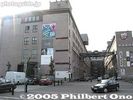
Finnish Museum of Photography フィンランド写真美術館It is in a complex called the Cable Factory since it used to be a cable factory. The photo museum is housed in the large building on the left. The museum even once held a Japanese photography exhibition in 2001 which had traveled from Sweden. They still had the exhibition catalog in stock so I bought one.
The complex also houses other cultural facilities like dance theaters and art galleries.
Web site: fmp.fi
元のケーブル生産工場が現在美術・文化施設となっている。2001年にスウェーデンから来た日本の写真展も開催された。その図録が館内のショップでまだ販売されて一冊買った。Oct 05, 2005
|
|
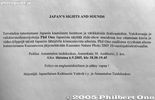
Slide show notice スライドショーのお知らせPosted in Annantalo for my slide show held on September 6, 2005, from 6:30 pm to 7:45 pm. The slide show was titled "Japan's Sights and Sounds" to show my pictures and movie clips of Japanese festivals. It was planned almost at the last minute. A small announcement also appeared in Helsinki's leading newspaper called "Helsingin Sanomat (English version)."
フィンランド語のスライドショーお知らせ。会場内の掲示板にて。Oct 05, 2005
|
|

Slide show in Annantalo auditorium スライドショーFor about 80 min., I showed my pictures and movie clips of Japanese festivals in English: Kiba Kakunori square log rolling, Tokyo Jidai Festival, Yamato Awa Odori Dance, Onbashira Festival in Nagano, Yotsukaido Hadaka (Mud) Festival, Yokaichi Giant Kite Festival in Shiga Pref., Imperial Palace visit on the Emperor's Birthday, and more.
The slide show was held as an event by the Friends of Japanese Culture Society in Helsinki. It was a good crowd, perhaps 30 or more people attended. Special thanks to the Society's chairman, Ronny Rönnqvist, who arranged everything on very short notice, and to the Annantalo staff. Annantalo is also the venue used by the Society for its annual Japan Day event in April.
Annantalo Web site: kulttuuri.hel.fi/annantalo/esittely_en.html
80分ほど日本のお祭りをスライドショーで英語で紹介しました。木場角乗り、東京時代祭り、大和市の阿波踊り、滋賀県八日市大凧祭り、皇居の一般参賀など。約30人が来場した。ヘリシンキにある「フィンランド・日本文化友の会」のイベントとして開催されました。その会長(Ronny Rönnqvist)が私の友人でお世話になりました。
偶然に一ヶ月前にこの会長が別件で初めてメールが来て、返事のついでに「実は、9月にフィンランドへ行くよ」と言ったら「是非会いましょう」と。じゃ、せっかくだから、友の会のためにもスライドショーやってあげようかと提案したら急きょ受け入れてくれた。クーサモへ行く前にヘルシンキに数日間いる予定だったのでヘルシンキにも日本を紹介できました。運良くこのいい会場が見つかれた。Oct 05, 2005
|
|

Friends of Japanese Culture Society officeThe office is actually a small room in this nice building.
Web site: japaninkulttuuri.net
「フィンランド・日本文化友の会」の事務所があるビル。Oct 05, 2005
|
|
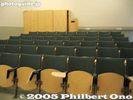
Annantalo auditorium 小ホールの中Nice little venue for my slide show in Helsinki. It seats 45 people.
45席の小さいホールが会場。Oct 05, 2005
|
|
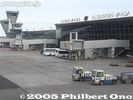
Helsinki-Vantaa Airport ヘルシンキ・ヴァンター空港It takes about 9 to 9 1/2 hours from Tokyo to Helsinki via Finnair. Only one country lies between Japan and Finland: Russia. Both countries actually share a border with Russia. As of this writing, Finnair flies direct from Tokyo only twice a week. Narita is so congested with only two runways, they cannot offer more flights. Finnair has more direct flights from Kansai Airport in Osaka.
現在では、成田発のヘルシンキへの直行便は週に2便しかない。関空発は週に5便。9時間ちょっとでヘルシンキへ行ける。Oct 05, 2005
|
|
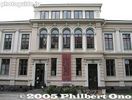
Annantalo Arts Centre (my slide show venue) スライドショーの会場A former primary school built in 1886, this distinguished-looking building is now an arts center for children and young people. It also has a small auditorium where I gave a slide show on Japanese festivals on Sept. 6, 2005. It's centrally located and convenient.
Annantalo Web site: kulttuuri.hel.fi/annantalo/esittely_en.html
ヘルシンキにも急遽スライドショーをやることになってこの会場になりました。児童の芸術文化センターの施設。市内の中心部にある。Oct 05, 2005
|
|
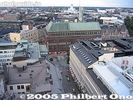
View from Sokos Hotel Torni ホテルの展望台Helsinki has no real tall buildings so the skyline is low. In this picture, you can see the famous white cathedral in the background and Stockmann department store (brown building) in the foreground.
Helsinki also has many islands off shore. Helsinki's sister city in Japan is Sendai in Miyagi Prefecture. It's easy to guess why. Sendai is also a coastal city and near Matsushima, famous for many pine tree islands in the bay.
This terrace atop the Sokos Hotel Torni afforded a terrific, 360-degree panoramic view of Helsinki. The terrace also has chairs and tables since it is part of Ateljee Bar.
ヘリシンキは、高層ビルがなくて低いスカイラインである。海岸沿いに島々が多い。ちなみに仙台市と姉妹都市でもある。Oct 05, 2005
|
|
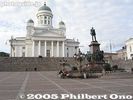
Senate Square and Cathedral ヘリシンキ大聖堂One of the symbols of the city, called Tuomiokirkko. This Lutheran church was completed in 1852.
More Helsinki sights: Helsinki City Tourist & Convention Bureau
ヘリシンキの一つのシンボルである。中は割りと地味な感じ。
HP: フィンランド政府観光局(日本語)Oct 05, 2005
|
|
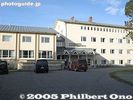
Kuusamon Kansanopisto 宿泊先This is where most of us stayed in Kuusamo during the nature photo festival. It was almost right across the street from Kuusamo Hall, making it very convenient and economical. It's near a supermarket and restaurants. It's like a hostel with communal showers, toilets, and kitchen. Breakfast was good too. Normally open during summer.
Web site: http://edu.kuusamo.fi/kansanopisto/
クーサモの宿。外国から来た写真祭りの参加者はほとんどここに泊まった。とても便利な所でした。シングル部屋もあるけど、シャワーとトイレは共有。夏樹だけ営業。安い。Oct 05, 2005
|
|

Shower, toilet, and rubber broom シャワーとトイレThe floor of the shower area is the same as the toilet's. After taking a shower, we have to use a rubber broom (upper right corner) to sweep the water to the drain. I still don't understand why we have to do this and why the shower does not have a separate floor. Apparently this is common in Finland especially in older buildings.
シャワーとトイレの床は共有でシャワーの後にゴムぞうきん(右上)で水を排水に。面倒と思うけど、フィンランドの古い家にこうなっている。Oct 05, 2005
|
|

Birds of Hokkaido, by Tadashi Shimada (クーサモ図書館への寄贈図書)Great collection of various birds photographed in Hokkaido, Japan's northern-most island. See book review here.
This book has been donated to the Kuusamo public library by Philbert Ono.
この写真集もPhotoGuide Japanがクーサモ町の図書館へ寄贈しました。Oct 05, 2005
|
|

Manga display in Kuusamo bookstore クーサモにもマンガApparently, manga (comics from Japan) is popular even in Kuusamo. In English, we call this character Astro Boy. In Japanese, "Tetsuwan Atom."
クーサモの本屋さんにもマンガあり。Oct 05, 2005
|
|

Fukei Shashin (Landscape Photo) magazine (クーサモ図書館への寄贈図書)This is a magazine dedicated to landscape and nature photography in Japan. It is published every two months.
This July/Aug. 2005 issue has been donated to the Kuusamo public library by Philbert Ono.
この雑誌もPhotoGuide Japanがクーサモ町の図書館へ寄贈しました。Oct 05, 2005
|
|
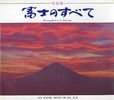
All Scenic Spots of Mt. Fuji, by T. Watanabe (クーサモ図書館への寄贈図書)Mt. Fuji is of course Japan's symbol and most beautiful mountain. It is a favorite subject among many photographers because it affords an infinite variety of angles and views from which you can photograph it. Not to mention the different times of day and the different seasons when you can capture the mountain. Of course, you can also climb it.
This little book contains an excellent variety of beautiful Mt. Fuji photos.
This book has been donated to the Kuusamo public library by Philbert Ono.
この写真集もPhotoGuide Japanがクーサモ町の図書館へ寄贈しました。Oct 05, 2005
|
|
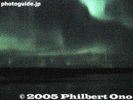
Aurora over the lake オーロラと湖Seeing the aurora in the sky and reflected on the lake was simply awesome.
湖に反映されて奇麗だった。なにも音もしない。形が常に変わる。Oct 05, 2005
|
|

Shiki no Shashin (Four Seasons Photo) magazine (クーサモ図書館への寄贈図書)This is a magazine dedicated to nature photography in Japan. It is published every two months.
This Aug./Sept. 2005 issue has been donated to the Kuusamo public library by Philbert Ono.
この雑誌もPhotoGuide Japanがクーサモ町の図書館へ寄贈しました。Oct 05, 2005
|
|

Northland Japanese Cranes, by Masahiro Wada (クーサモ図書館への寄贈図書)Beautiful pictures of this favorite bird of Japan in very scenic locations, mainly Hokkaido. In Japanese, this bird is called "tancho." See book review here.
This book has been donated to the Kuusamo public library by Philbert Ono.
この写真集もPhotoGuide Japanがクーサモ町の図書館へ寄贈しました。Oct 05, 2005
|
|
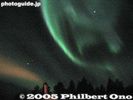
Aurora! オーロラ!We were very lucky to see the northern lights that evening too. September is usually still too early for the northern lights to appear, but there it was.
It was a greenish veil of light floating in the black sky and ever-changing in shape. It doesn't make any sound. It was my first time to see northern lights. In Finnish, they call it "fox tail."
The orange stream on the lower left is actually steam (or smoke) coming out of the sauna tent. It's not part of the aurora. I don't think I could've taken this picture with a film camera. It was too dark.
オーロラも見えて超ラッキー!ちょっと早い時期だけど、珍しく現れた。Oct 05, 2005
|
|
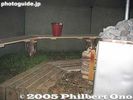
Inside Finnish sauna サウナの中This is what it looked like (before we all entered stark naked).Oct 05, 2005
|
|

Invisible Power, by blind photographers (クーサモ図書館への寄贈図書)I showed some pages in this book during my 2nd slide show in Kuusamo. The pictures in the book were taken by blind photographers. It includes a few pictures which are embossed so that the blind can touch and feel the pictures. This book has been donated to the Kuusamo public library by Philbert Ono.
この写真集もPhotoGuide Japanがクーサモ町の図書館へ寄贈しました。
Here is my book review:
For most of us, going blind is one of our worst fears. Especially for a photographer. After all, how can you take pictures and look at pictures if you're blind?
Ask a blind photographer to answer such questions. Yes, there are blind photographers. How do they do it? Well, imagine how you would take pictures if you were blind. First, your ears would serve as a guide. By listening carefully, you can tell where the subject is and how far away. If you want to photograph a person, take the picture when you hear laughter. Your ears can serve well as a guide to when to take the shot.
For still-life subjects, you can touch the object (flowers, etc.) and decide which angle to photograph it from. If you're waiting for a sunrise, feel the heat of the sun on your skin before taking the picture. You can also discern which direction the sun is in. Besides using your other four senses, a major boon is having a seeing person tell you what's going on and when to take the picture.
And that's how they do it. It's truly amazing how adaptive and strong humans can be to overcome any kind of handicap. The same applies to the blind. In Tokyo, sometimes I see a blind person taking a subway or train. You know how difficult it is even for seeing people to navigate through all those crowds in the train/subway stations? There are pimpled tiles on the ground to guide the blind, but still, the blind are truly awesome to venture out by themselves. It is the "unseen or invisible power." Of course, we all have it, but most of us don't really know how to tap into it.
As for the question of how a blind person can "see" photographs, this book gives the answer. Besides regular color photographs, it includes nine pictures that you can touch and feel. They are embossed images (that smell like rubber), and each one is captioned in Braille. The book claims to be the first photo book in Japan to include such images for the blind. All the pictures are of typical subjects that most amateurs in Japan pursue: Mt. Fuji, cherry blossoms, festivals, flowers, family and friends, children, and even fireworks. You can't help but be impressed by the quality of the photos while knowing that they were all taken by a blind person.
The book says that photography by blind people started with the invention of fully automatic cameras and embossed printing technology. There is a special copying machine (rittai kopii-ki) that can produce an embossed image of the copied photograph.
The photographs in the book come from the best ones that have been shown at the annual blind photographers exhibition held annually in the past 15 years in Tokyo. The common reaction of most visitors to these exhibitions is, "Blind people taking pictures? I don't believe it!" Their disbelief soon turns into admiration, and the common notion that blind people cannot take pictures is totally dispelled. Such is the power of the blind, not only in being able to take pictures, but in also affecting normal seeing people in positive ways.
The National Blind Photographers Exhibition (Zenkoku Mojin Shashin-ten) was first held in 1985 in Tokyo. Over 200 pictures by blind people all over Japan are submitted and a panel of judges select about 60 pictures for the exhibition held every Dec. in Shinjuku, Tokyo. The exhibition displays each photograph in two ways. There's the normal photograph, and then there's an embossed version (made by the special copying machine) of the same picture that the blind can touch and feel with their fingers.
The exhibition is not only about the photographs themselves, but also about the determination and effort by the blind and the loving support of family members. It's about the people behind the camera and about tapping that "power" that lies within (usually dormant for most of us). The exhibition is supported by corporations (like Minolta which developed the special copying machine), organizations, and prominent pro photographers. The honorary chairman of the panel of judges is Prince Mikasa, a relative of the Emperor. Personally, I think it's just fantastic that blind people are able to take pictures and look at them. Having a means of self-expression is so important to all humans. (Reviewed by Philbert Ono)Oct 05, 2005
|
|

Photo books from Japan donated to Kuusamo Public Library. 日本からの写真集を現地の図書館へ寄贈。This was our backstage lounge at Kuusamo Hall. Before donating a bunch of Japanese nature photo books to the Kuusamo public library, I left them in this lounge where the other participating photographers could look at them during slide show breaks. Three of the books (and one DVD) were donated by the three photographers I introduced in my third slide show. The rest were bought and donated by me. The images following show what books I donated.
日本から持ってきた写真集をホールの控室に置いて他の参加者の写真家が拝見した。写真祭りが終わってからこれらの写真集をすべてクーサモ町の図書館へ寄贈しました。Oct 05, 2005
|
|
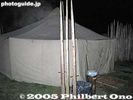
Finnish sauna tent サウナOn September 10, they took us all to dinner to a place near a lake. After dinner (reindeer meat), we went to this sauna in a large tent.
食後にサウナへ。Oct 05, 2005
|
|
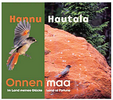
New book by Hannu Hautala, "Onnen maa" (Land of Fortune) ハンヌ・ハウタラの新写真集Cover of his new book published in Oct. 2005. The text is in Finnish, English, and German.
Sample photos and order at Articmedia.Oct 05, 2005
|
|

Path to lake サウナの後は冷たい湖へA Finnish sauna is always near a lake. After the sauna, you supposed to take a dip in the freezing lake. I went to the lake but declined to go in.
湖に入りませんでした。Oct 05, 2005
|
|

Inside Finnish sauna サウナの中It got very foggy inside as they kept splashing water on the hot rocks. It didn't get very hot, but it was interesting. Lots of steam and only a single light illuminated inside the sauna.
蒸気で中ではなにも見えなくなった。見えないけど皆は全裸。Oct 05, 2005
|
|
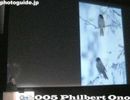
Slide show by Hannu Hautala ハンヌ・ハウタラ氏He showed pictures from his upcoming photo book, "Onnen maa" (Land of Fortune) to be published in Oct. 2005 (see next image).
新しい写真集を紹介した。Oct 05, 2005
|
|

Kuusamo newspaper "Koillis sanomat" 地元の新聞Since it was one of the sponsors, the local newspaper wrote about the nature photo festival daily. I even got interviewed for a story. They asked me questions like how they can attract more Japanese tourists to Kuusamo. I replied that we need more direct flights from Tokyo to Helsinki. (There are only two a week via Finnair as of this writing.)
一つのスポンサーである地元の新聞紙もこの写真まつりを大きく取り上げてくれました。私のインタービューも掲載された。Oct 05, 2005
|
|

Bird with firey eyes, by Rob Jordan ロブ・ジョーダン氏Yes, that's firey, not fiery. This bird has bright red eyes and also bright feather strands emanating from the eyes, making it look like fire. Rob's photo was also used on the program booklet (see next image). He is from the UK.
Web site: robjordan.co.uk
この鳥の目が真っ赤で目の周りも炎と見える羽がある。プログラムの表紙写真にもなった(次の写真を参考)。Oct 05, 2005
|
|
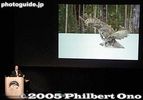
Slide show さまざまなスライドショーOver 30 nature photographers, both men and women, from eight countries gave slide shows during two consecutive weekends in September 2005. It was a great pleasure meeting the photographers and making new friends. Photos of birds were very popular, but there were also photos of the aurora borealis, Arctic landscapes, bats, and even live music.
8カ国から30人以上のネイチャーフォト写真家が集まりまして素晴らしいイベントでした。野鳥の写真が多かったけど、他にも北欧らしいオーロラの写真や北極地方の風景と野生生物の写真も発表された。Oct 05, 2005
|
|
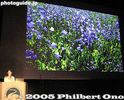
Slide show by Estonian photographers エストニア人のスライドショーThe evening of September 12 was devoted to works by six Estonian photographers. Pictured is woman photographer Kaari Saarma.
The Estonian night climaxed with Tõnu Ling's live harmonica performance during an automated slide show of his beautiful pictures of his native Saaremaa and Muhumaa islands in Estonia.
6人のエストニア人の写真家がスライドショーをやりました。一人は女性。とてもフレンドリーな連中でした。エストニアは、ヘルシンキから簡単に行ける国。Oct 05, 2005
|
|
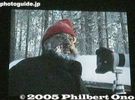
Film of Hannu Hautala ハンヌ・ハウタラ氏On Friday September 16, it was Hannu Hautala night. It started with a film of Hannu at work in the wilderness. The film was beautifully accompanied by Heikki Sarmanto whose piano-playing reacted spontaneously to the film as he watched it.
ハンヌ・ハウタラ氏は、フィンランドの一番有名なネィチャー写真家。クーサモ在住。まず、ハウタラ氏の仕事ぶりを紹介する短い映画が上映した。BGMはライブのピアノ。Oct 05, 2005
|
|
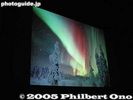
Northern lights slide show by Jorma Luhta オーロラの写真What would a nature photo festival in Finland be without photos of the aurora borealis? Wisely, they included some northern lights pictures. This Finnish photographer showed spectacular images of northern lights. Looks really surreal or like in a dream. Wish there was an English translation of his Finnish narration.
Web site: Jorma Luhta
とても美しいオーロラの写真もフィンランド人の写真家が紹介した。Oct 05, 2005
|
|
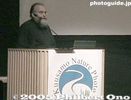
Hannu Hautala ハンヌ・ハウタラ氏Hannu Hautala speaks.
ハウタラ氏の出番。Oct 05, 2005
|
|
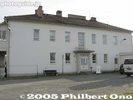
Venue for exhibition by Estonian photographers エストニア人の写真展Besides Kuusamo Hall, other venues in Kuusamo were used for exhibitions like this one called Porkkatörmä. It has exhibition rooms on the first floor where Estonian photographers exhibited their works. The 2nd floor had a small museum introducing Kuusamo's local history.
別の会場でエストニア人の写真展が開催された。エストニアは、フィンランドの隣国と言える直ぐそばの国。ヘルシンキからフェリーで簡単に行ける。Oct 05, 2005
|
|

Book by Satoshi Kuribayashi (寄贈図書)Some of the pictures by Satoshi Kuribayashi which I showed in the slide show came from this award-winning book titled "The World of Kuribayashi Satoshi." See book review here.
This book has been donated to the Kuusamo public library by Satoshi Kuribayashi as recommended by Philbert Ono.
ISBN: 4054012507
上映した写真は、この写真集からも選びました。私の推薦で栗林先生がこの写真集をクーサモ町の図書館へ寄贈しました。Oct 05, 2005
|
|

Sept. 11, 2005: The third photographer I introduced was insect photographer Satoshi Kuribayashi who lives in Nagasaki Prefecture. He is an award-winning photographer who has published numerous photo books in Japan. 僕のスライドショーその3The third photographer I introduced was insect photographer Satoshi Kuribayashi who lives in Nagasaki Prefecture. He is an award-winning photographer who has published numerous photo books for the public and children in Japan.
I knew that insect photography was not so popular in Finland, but I believed that this photographer's work and technique would be very interesting to people in Finland, so I asked him to send some pictures and books to me. He happily obliged.
As I expected, his pictures (and DVD movie) were very well received by the audience in Kuusamo. First I showed some of his extreme closeup pictures of insects, then a few pictures of his custom-made cameras and him at work (as you see here). For the remaining 9 minutes of the slide show, I showed his fantastic DVD movie of insects.
Sample photos:
Migratory locust
Melon fly
Camponotus japonicus ant
Tiger beetle
Beetle in flight
His Web site: http://www5.ocn.ne.jp/~kuriken/
最後に、栗林 慧先生の昆虫写真作品と興味深い手作りのカメラやその仕事ぶりを紹介してDVDの動画も一部上映しました。これもとても好評でした。北欧では昆虫写真はあまり人気ではないが、栗林先生の作品を見たら皆さんの関心が集めました。予想とおりでした。やはり昆虫も面白い。Oct 05, 2005
|
|
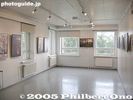
Exhibition by Estonian photographers エストニア人の写真展In this room at Porkkatörmä gallery, pictures by Tõnu Ling and Tan Silliskaar.Oct 05, 2005
|
|

Book by Satoshi KuribayashiThis book explains some of his shooting techniques and custom-made cameras. Notice his self-portrait with a real praying mantis. The book's title is, "The Cameraman Who Became an Ant."
こので栗林先生が手作りのカメラや撮影方法を紹介して参考になった。Oct 05, 2005
|
|

DVD by Satoshi Kuribayashi (寄贈図書)During the slide show, I showed about 9 min. of this 18-min. DVD movie showing super closeups of various insects eating, fighting, or killing (another insect). Everyone thought it was quite amazing. See DVD review here.
This DVD has been donated to the Kuusamo public library by Satoshi Kuribayashi as recommended by Philbert Ono.
Sample clips (Quicktime):
Locust eating
Praying mantis
スライドショー中にこのDVDの動画も一部上映しました。これもとても好評でした。
私の推薦で栗林先生がこのDVDをクーサモ町の図書館へ寄贈しました。Oct 05, 2005
|
|

Sept. 11, 2005: My third slide show introduced the works of three famous Japanese nature photographers. I devoted about 20 min. to each photographer. 僕のスライドショーその3My third slide show introduced the works of three famous Japanese nature photographers. I devoted about 20 min. to each photographer.
The first one was Mitsuhiko Imamori who takes pictures of Lake Biwa in Shiga Prefecture where he lives. Since Finland has so many lakes, I wanted to show pictures of Japan's largest lake called Lake Biwa. I showed pictures from his photo book titled "Water's Edge."
I explained about how the lake was not just a container of water. It was actually very dynamic with the warm and cold water constantly circulating inside the lake. Many rivers and streams also are connected to the lake, which in turn supports much nature and wildlife in and around the lake nicknamed "Mother Lake." Imamori also focuses on how people co-exist with nature and respect it.
Web site: imamori-world.jp
3回目のスライドショーは、いよいよ3人の有名日本人写真家(今森光彦、中村郁夫、栗林慧)の作品を紹介しました。最初は今森先生で、「水辺」という写真集から二十数点の写真を上映しながら琵琶湖を紹介して 「生きている湖」、「里山」などの話をしました。フィンランドは、湖がとても多い国で日本の代表的な湖も紹介したかったのです。Oct 05, 2005
|
|

Sept. 11, 2005: The second photographer I introduced was Ikuo Nakamura, one of Japan's most well-known underwater photographers. I explained about how soil erosion and runoff killed a lot of coral in Okinawa together with the starfish... 僕のス�The second photographer I introduced was Ikuo Nakamura, one of Japan's most well-known underwater photographers. I explained about how soil erosion and runoff killed a lot of coral in Okinawa together with the starfish, a natural enemy of coral. Then I showed 20 of his pictures of coral and marine life in Okinawa.
It was an automatic slide show with Hawaiian music in the background. (A lot of people liked the Hawaiian music which was by Kealii Reichel, a very famous singer in Hawaii.) This was the only slide show of underwater photos at the Kuusamo Nature Photo festival.
Web site: squall.co.jp
次に中村郁夫先生の沖縄の美しい水中写真を20点上映して、珊瑚礁の絶滅とか天敵などの説明をして作品をBGMと一緒に自動スライドショーを。(BGMには、沖縄の音楽にしたかったけど、それが忘れまして手元にあったハワイの曲にしました。そのハワイの曲もとても好評でした。)北欧に見れない熱帯の生き物を見せたくて写真祭りの唯一の水中写真のスライドショーでした。Oct 05, 2005
|
|
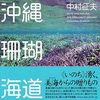
Book by Ikuo Nakamura (寄贈図書)The pictures by Ikuo Nakamura which I showed in the slide show came from this book titled "The Coral way Around Okinawa Islands." See book review here.
This book has been donated to the Kuusamo public library by Ikuo Nakamura as recommended by Philbert Ono.
ISBN: 4757207824
上映した中村郁夫先生の作品はこの写真集のものでした。私の推薦で中村先生がこの写真集をクーサモ町の図書館へ寄贈しました。Oct 05, 2005
|
|
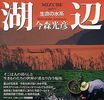
The first one was Mitsuhiko Imamori who takes pictures of Lake Biwa in Shiga Prefecture where he lives. Since Finland has so many lakes, I wanted to show pictures of Japan's largest lake called Lake Biwa.(寄贈図�The pictures by Mitsuhiko Imamori which I showed in the slide show came from this book titled "Mizube" (Water's Edge). See book review here.
This book has been donated to the Kuusamo public library by Mitsuhiko Imamori as recommended by Philbert Ono.
ISBN: 4418049118
今森光彦先生のスライド作品は、この写真集から使用しました。私の推薦で今森先生がこの写真集をクーサモ町の図書館へ寄贈しました。Oct 05, 2005
|
|
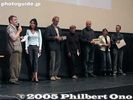
Kuusamo Nature Photo contest winners フォトコンの授賞式Lassi speaks with the winners of the nature photo contest. It's good to see both men and women photographers.
最優秀の作品は女性のアマでした。Oct 05, 2005
|
|

Sept. 10, 2005: My second slide show was titled, "Nature Photography in Japan." It was a mixed bag of slides introducing a very basic history of landscape photography in Japan, photo galleries in Japan, and nature photo books and magazines... My second slide show was titled, "Nature Photography in Japan." It was a mixed bag of slides introducing a very basic history of landscape photography in Japan, photo galleries in Japan, and nature photo books and magazines in Japan (with a closeup on a book called Invisible Power by blind photographers in Japan).
With the slide pictured here (of Kameido Tenjin Shrine's wisterias in Tokyo), I was giving an example of how early Japanese landscape photographers were influenced by woodblock prints. They tried to photograph the scenes and compositions made famous by woodblock artists such as Hokusai and Hiroshige.
2回目のスライドショーは、日本の写真史、自然と宗教(神道)との関係や写真集・雑誌など写真業界を紹介しました。このスライドは、初期の日本人風景写真家が北斎などの浮世絵から影響を受けたことを説明している。Oct 05, 2005
|
|
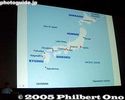
Sept. 9, 2005: My first slide show. For my first slide show, titled "Nature in Japan," I gave a basic introduction to Japan (first with a map shown here), and showed my pictures of mountains (Mt. Fuji, Kamikochi, Mt. Fugendake), Lake Biwa... �For my first slide show, titled "Nature in Japan," I gave a basic introduction to Japan (first with a map shown here), and showed my pictures of mountains (Mt. Fuji, Kamikochi, Mt. Fugendake), Lake Biwa, coastlines, popular nature spots, wildlife such as snow monkeys, and the four seasons, especially flowers.
9月9日〜11日の三日間の毎日に1回の一時間弱のスライドショーをあげました。初日は私の写真を使って日本の自然(山、湖、海、四季など)を紹介しました。Oct 05, 2005
|
|
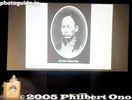
Sept. 10, 2005: My second slide show 僕のスライドショーその2I also mentioned a few important names in Japanese photography history such as Hikoma Ueno in Nagasaki who was one of Japan's first professional photographers.
日本の写真史も簡単に紹介しました。これは、上野彦馬。Oct 05, 2005
|
|

Announcement of photo contest winners フォトコンの授賞式The Kuusamo Nature Photo festival opened with the awards ceremony for the winners of the nature photo contest. Pictured here is one of the winning photos.
写真まつりの一つの事業はネイチャー写真のフォトコン。主に青年とアマ用。Oct 05, 2005
|
|

Opening ceremony 写真まつりの開会式An opening ceremony was held on September 9, 2005, the first day of the Kuusamo Nature Photo festival. Speaking is Lassi Rautiainen who headed the festival committee. Since the beginning 10 years ago, he has been the main man behind this annual nature photo festival.
実行委員長であるラッシー・ラウティアイネン氏(Lassi Rautiainen)の挨拶。この写真祭りの創業者でもある。今年で10年目。Oct 05, 2005
|
|
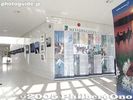
Kuusamo Hall 2nd floor lobby 2階のロビーThe balcony on the 2nd floor also served as an exhibition space and booth space for sponsors and the sale of photo books.Oct 05, 2005
|
|

Kuusamo Hall exhibition space ホール内の写真展This nice dedicated space held the BBC Wildlife Photographer of the Year exhibition.
ホール内の一番いい展示スペース。Oct 05, 2005
|
|
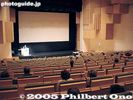
Inside Kuusamo Hall ホールの中(休憩中)The hall, called Kuusamotalo in Finnish, has a very nice auditorium with comfortable, deluxe chairs equipped with tables. As if symbolizing Finland's vast number of forests, lots of wood is also used in the hall's interior.
Opened in 1996, the hall seats over 500. It is geared for all kinds of events like conferences, concerts, stage performances, and slide shows. This is where all the slide shows were held during the Kuusamo Nature Photo festival.
We could easily project our images either with a slide projector (with remote control) or from our own laptop computer which we could control directly from the podium. The screen is very large and well-suited for slide shows. The hall's sound system is also excellent. Picture taken during a slide show break.
500人以上も入れる大ホールが木がとても奇麗。スライドショーは、自分のノートパソカンで直接上映できたり、またはホールスライド映写機でも使用できる。音響システムも抜群。Oct 05, 2005
|
|
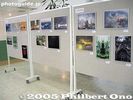
Kuusamo Hall exhibition space フォトコンの展示Photo contest winners displayed in the hall's lobby.
フォトコン受賞者の作品も展示された。Oct 05, 2005
|
|

Kuusamo Hall exhibition space ホール内の展示スペースBesides the big auditorium, Kuusamo Hall has multiple facilities including exhibition spaces and a restaurant. It functions as a performing arts and culture center.
総合的の文化施設で広い展示スペースや会議室も設けている。Oct 05, 2005
|
|
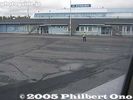
Kuusamo Airport クーサモ空港. クーサモはヘルシンキから飛行機で70分で行ける北東の自然いっぱいの町。2005年9月にクーサモのネィチャーフォトの祭りへ招待されてスライドショーをあげた。The airport is close to town, taking about 10 min. by car.
市街まで車で10分。Oct 05, 2005
|
|
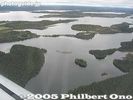
Landing in Kuusamo in northeast Finland slightly below the Arctic Circle. I was invited to their 10th Kuusamo Nature Photo festival in September 9-17, 2005 to give slide shows of Japanese photographers. クーサモの上空Lakes everywhere. In fact, about 14% of Kuusamo's land area is covered by lakes (about 166 of them), and 60% is covered by forests. Lakes and forests breed a lot of nature and wildlife. Hence, Kuusamo is one of Finland's prime areas for bird-watching and wildlife safaris. The population is over 18,000, but they receive about 1 million visitors a year for the nature and skiing.
With so much water and trees all around, I think Finland is a very pacifying country. Most people feel at peace whenever they see water or trees. Finland will probably become a popular tourist destination when more people discover it. A great place to kick back and relax.
See Kuusamo on map: Virtual Finland map
Web site: kuusamo.fi
クーサモの14%が湖で6割が森林。こんな水と木の多いところは、やはり癒してくれる環境である。言うまでもなく自然いっぱいの地域。野鳥や野生動物を観察できる最高の地域。Oct 05, 2005
|
|
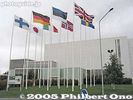
Kuusamo Hall 写真まつりのメイン会場、クーサモ・ホールKuusamo has been holding a nature photo festival annually in September since 1996 at this beautiful hall. They invite a good number of nature photographers (mostly from Europe) to give slide shows and exhibitions. The main venue is Kuusamo Hall, pictured here. They also use other venues in Kuusamo town for photo exhibitions.
Normally, the festival is held for four days centering on one weekend. But for their 10th year in 2005, the festival was held during two consecutive weekends during September 9-18. For this special year, they decided to invite people from as many countries as possible (like ten), including Japan for the first time.
In spring 2005, they contacted me for recommendations on Japanese photographers to be invited to the festival. We tried to invite a well-known Japanese photographer (with me as his guide and interpreter), but he had to pull out at the last minute so I ended up being the only person from Japan to participate in Kuusamo. I gave three slide shows held in this hall on Sept. 9, 10, and 11. Fortunately, it worked out very well.
As you can see, they raised the flags of all the countries represented at the photo festival. I was proud to see the Japanese flag and to be representing Japan even though I'm American.
Kuusamo Nature Photo Web site: kuusamo.fi/naturephoto/english.html
Kuusamo Hall Web site: kuusamo.fi/kuusamotalo/eng/
クーサモ ネイチャーフォトまつりのメイン会場であるクーサモ・ホール。この写真まつりに初めて日の丸も上がった。私はアメリカ人なのに、日本も代表できることで嬉しかった。星条旗も上げて欲しかった。クーサモ・ホールの他にも市街にある展示スペースに写真展が開催された。
今年の春にまつりの実行委員長 (Lassi Rautiainen) からメールが来て、「今年は10年目で、日本人の写真家も招待したいので推薦できる写真家がいないか」と聞かれました。私が一人の有名写真家を推薦したけど、彼が急に都合が悪くなって結局、僕一人で日本の代表として行くことになりました。これも上手くいった。Oct 05, 2005
|
|
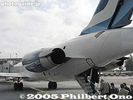
30-min. delay from Helsinki to Kuusamo... 出発30分の遅れKuusamo, the site of the annual Kuusamo Nature Photo festival I was invited to, is in northeastern Finland near the Russian border (see map). After spending a few days in Helsinki, I took this plane to Kuusamo taking about 70 min. Finnair flies from Helsinki to Kuusamo usually once a day. By car, it's about 800 km.
This day (Sept. 8, 2005), we stood in line at the gate, gave our boarding passes, and boarded a bus that would take us to the plane, a Boeing MD-82.
After standing and waiting for some minutes in the bus, they announced that they had to change one of the tires of the plane, so the flight would be delayed by 30 min. We all went back into the terminal building and waited. Of course, no one complained. We would rather fly in a safe plane. I wonder why they waited until the last minute to inspect the tires? Shouldn't they have inspected the tires the day before??
It's hard to see in this photo, but the left-most rear tire was indeed replaced. It looked new (shiny black) compared to the tire next to it.
ネイチャーフォトの写真まつりの開催地クーサモは、フィンランドの北東にある。ヘルシンキからクーサモへ毎日一便(約70分)が飛んでいるが、この日、飛行機を乗るところになんと左のタイヤの交換が必要という知らがあってターミナルビルへ戻されて30分を待った。勿論、安全が第一で誰も文句を言わなかった。この写真で見づらいが、確かに一番左のタイヤが新品だった(艶があった)。Oct 05, 2005
|
|

CorridorAug 14, 2005
|
|
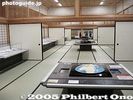
Exhibition hallAug 14, 2005
|
|
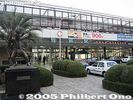
JR Saga StationSaga Castle is a short bus ride from Saga Station.Aug 14, 2005
|
|

In Japanese, it is called the Saga-jo Honmaru Rekishikan. It is a ridiculously spacious historical museum.Aug 14, 2005
|
|
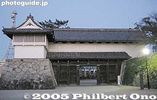
Saga Castle gateThis is pretty much the only building left of Saga Castle. Otherwise, there are stone walls and moats.
Saga Castle was completed in 1611 when the first lord, Nabeshima Katsushige moved in. The castle experienced major fires in 1726 and 1835.Aug 14, 2005
|
|
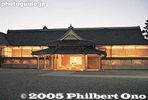
Saga Castle palace, rebuilt in 2004 after 3 years of construction. 佐賀城本丸歴史館This is a magnificent and accurate reconstruction of the palace built by the 11th Saga lord, Nabeshima Naomasa, in 1838 after a fire razed the castle.Aug 14, 2005
|
|

MuseumAug 14, 2005
|
|
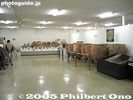
Inside museumAug 14, 2005
|
|
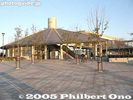
JR Yoshinogari Koen StationAug 14, 2005
|
|

StorehousesAug 14, 2005
|
|

Store house for sacred offeringsSacred offerings for the gods such as sake and silk were made and stored in these huts.Aug 14, 2005
|
|

Aug 14, 2005
|
|

Aug 14, 2005
|
|
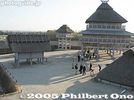
Aug 14, 2005
|
|
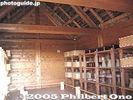
Inside a storehouseAug 14, 2005
|
|

Burial moundsA large clay pot served as the coffin.Aug 14, 2005
|
|
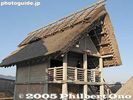
Aug 14, 2005
|
|
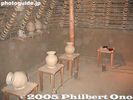
Aug 14, 2005
|
|
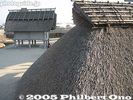
Aug 14, 2005
|
|
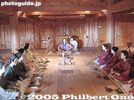
Inside main worship hall, meeting roomAug 14, 2005
|
|
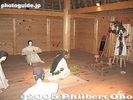
Inside main worship hall, ancestral prayersAug 14, 2005
|
|

Religious and ceremonial areaYoshinogari is a huge historical park near Yoshinogari Koen Station on the JR Nagasaki Line, not too far from Saga Station.
The park consists of a number of areas, each having a distinct function. This area has buildings used for religious ceremonies.
Aug 14, 2005
|
|
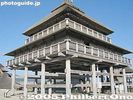
Main worship hallThis is the largest structure with three floors. One was used for ancestral worship and another floor was used for important meetings.Aug 14, 2005
|
|
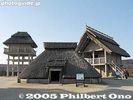
Aug 14, 2005
|
|

Watch towerAug 14, 2005
|
|
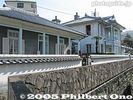
Photo museumAug 14, 2005
|
|
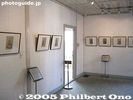
Photo museumAug 14, 2005
|
|

Grave of Ueno HikomaAug 14, 2005
|
|
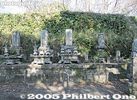
Grave of Ueno HikomaAug 14, 2005
|
|
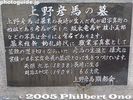
Grave of Ueno HikomaAug 14, 2005
|
|
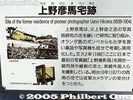
Description of Ueno Hikoma residence and studioIt says that Hikoma opened Japan's first photo studio here in 1862. Aug 14, 2005
|
|
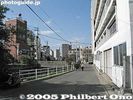
Site of Ueno Hikoma residence and studioAug 14, 2005
|
|
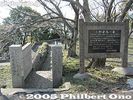
Grave of Ueno HikomaAug 14, 2005
|
|

Site of Ueno Hikoma residence and studioAug 14, 2005
|
|
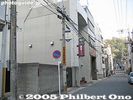
Ueno Hikoma birthplaceAug 14, 2005
|
|
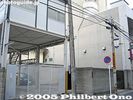
Ueno Hikoma birthplaceAug 14, 2005
|
|

Ueno Hikoma birthplaceAug 14, 2005
|
|
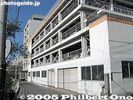
Site of Ueno Hikoma residence and studioHikoma opened Japan's first portrait studio here in 1862. The site is now occupied by a parking structure.Aug 14, 2005
|
|
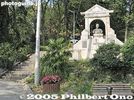
Statue of Ueno HikomaAug 14, 2005
|
|

Statue of Ueno HikomaAug 14, 2005
|
|

Statue of Ueno HikomaAug 14, 2005
|
|

Statue descriptionAug 14, 2005
|
|

Registry Shelf storing the names of atomic bomb victimsAug 13, 2005
|
|

The Registry Shelf points to the hypocenter.Aug 13, 2005
|
|

Remains of Urakami Cathedral wallNext to the hypocenter is this partial cathedral wall.Aug 13, 2005
|
|
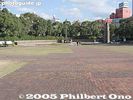
HypocenterAug 13, 2005
|
|

Nagasaki Atomic Bomb Museum entranceAug 13, 2005
|
|

Nagasaki Atomic Bomb Museum. Next to the hypocenter is the atomic bomb museum and registry shelf which stores the names of the atomic bomb victims.Aug 13, 2005
|
|

Hypocenter of atomic bomb, adjacent to Peace parkAlmost right next to the Peace park is the hypocenter marker above which the bomb exploded. Often hoards of students on class trips can be see squatting here listening to a talk about this place.Aug 13, 2005
|
|
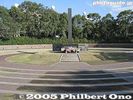
Hypocenter of atomic bombA series of concentric circles emanate from the marker.Aug 13, 2005
|
|

Memorial at hypocenterErected in July 1995 for the 50th anniversary.Aug 13, 2005
|
|

Hypocenter descriptionAug 13, 2005
|
|

Nagasaki atomic bomb peace park hypocenterAug 13, 2005
|
|
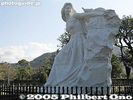
Peace memorial from ChinaThe park also has peace monuments from various countries.Aug 13, 2005
|
|

Hypocenter markerOn August 9, 1945 an atomic bomb exploded in the sky about 500 meters above the point where this monument now stands. The area within a 2.5 kilometer radius of the hypocenter was completely devastated.Aug 13, 2005
|
|
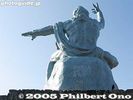
Rear viewAug 13, 2005
|
|

Peace memorial from CzechoslovakiaAug 13, 2005
|
|

Peace memorial from GermanyAug 13, 2005
|
|

Monument next to Peace StatueAug 13, 2005
|
|

Peace Statue descriptionAug 13, 2005
|
|
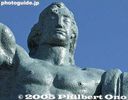
The closed eyes express a prayer for all war victims.Aug 13, 2005
|
|
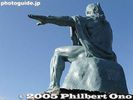
The left leg is poised for action to assist humanity.Aug 13, 2005
|
|
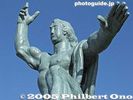
The outstretched left hand symbolizes tranquility and world peace.Aug 13, 2005
|
|

Aug 13, 2005
|
|
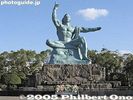
Peace StatueSculptor was Seibo Kitamura.Aug 13, 2005
|
|

The Peace Statue was built in Aug. 1955, the 10th anniversary of the bombing. The Peace Statue was modeled after popular wrestler Rikidozan.Aug 13, 2005
|
|

The right hand points to the threat of nuclear weapons.The bronze statue is 10 meters tall.Aug 13, 2005
|
|

The folded right leg symbolizes quiet meditation.Aug 13, 2005
|
|
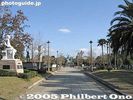
Path to Peace StatueAug 13, 2005
|
|
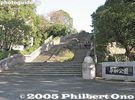
Entrance to the Peace ParkAug 13, 2005
|
|
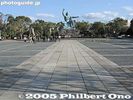
Peace StatueEvery Aug. 9, the anniversary of the atomic bombing, a memorial service is held here.Aug 13, 2005
|
|

Peace Fountain with the Peace Statue in the distanceA fountain of water was made for the victims who were desperate for water.Aug 13, 2005
|
|

Nyutoku-mon GateJul 24, 2005
|
|
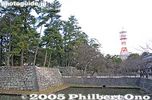
MoatJul 24, 2005
|
|

Garden in NishinomaruJul 24, 2005
|
|

Foundation of the castle towerThe 5-story castle tower was destroyed in 1600 during the Battle of Sekigahara. It was never rebuilt.Jul 24, 2005
|
|

Foundation of the castle tower (side view)Jul 24, 2005
|
|

Foundation of the castle tower (rear)Jul 24, 2005
|
|

Stone wall in the HonmaruJul 24, 2005
|
|

Tsu Castle, Ushitora turretJul 24, 2005
|
|

Park fountain in the castle groundsJul 24, 2005
|
|

Inner stone wallJul 24, 2005
|
|

Statue of Lord Takatora Todo, who became the 11th lord of the castle in 1608. He is revered for revamping the castle and developing the castle town of Tsu. He was originally from Inugami, Shiga Pref. This statue was built in 1998.Jul 24, 2005
|
|
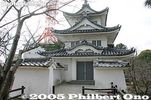
Ushitora turret entrance (not open)Jul 24, 2005
|
|

MoatJul 24, 2005
|
|

Ushitora turret and stone wallJul 24, 2005
|
|

MoatJul 24, 2005
|
|

Three-story Ushitora turret, reconstructed in 1958.This is the only significant building remaining of the castle.Jul 24, 2005
|
|

Ushitora turretJul 24, 2005
|
|

Castle wallThe stone wall is long, and the entrance to the castle grounds is on the far end, in front of the three-story Ushitora turret.Jul 24, 2005
|
|

Castle wall facing the streetWhen you walk to Tsu Castle from the bus stop, this is what you first see. It is obviously a flatland-type castle. Tsu Castle was first built in 1580 by Oda Nobukane, the younger brother of warlord Oda Nobunaga.Jul 24, 2005
|
|

Another observation deckJul 24, 2005
|
|

Ropeway stationJul 24, 2005
|
|
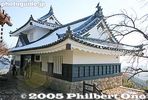
Gifu Castle MuseumIt is located on the site of a storehouse.Jul 24, 2005
|
|
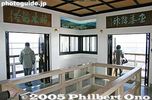
Top floor of castle towerJul 24, 2005
|
|
|
|

Castle tower observation deckMarvelous views of Gifu city can be had.Jul 24, 2005
|
|

Inside Gifu Castle MuseumJul 24, 2005
|
|

Castle tower baseJul 24, 2005
|
|

Inside the castle towerIt is a museum inside the tower.Jul 24, 2005
|
|

Castle clockJul 24, 2005
|
|

Low-angle view of castle towerJul 24, 2005
|
|
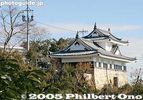
Gifu Castle MuseumJul 24, 2005
|
|

Castle towerJul 24, 2005
|
|

Path to Gifu Castle towerJul 24, 2005
|
|

Gifu Castle towerGifu Castle was originally called Inabayama Castle. Its known history starts from the 16th century with Lord Saito Dosan. Oda Nodunaga later took over the castle in 1567. He also renamed Inaba city as "Gifu."
Nobunaga left Gifu Castle and moved to Azuchi Castle in Shiga Pref. His sons took over Gifu Castle. Right before the Battle of Sekigahara, Tokygawa Ieyasu's forces attacked Gifu Castle which burned to the ground on Aug. 23, 1600.
The current castle tower was reconstructed in 1954.Jul 24, 2005
|
|

Former horseback riding groundsJul 24, 2005
|
|
| 71466 files on 284 page(s) |
 |
 |
280 |  |
 |
|